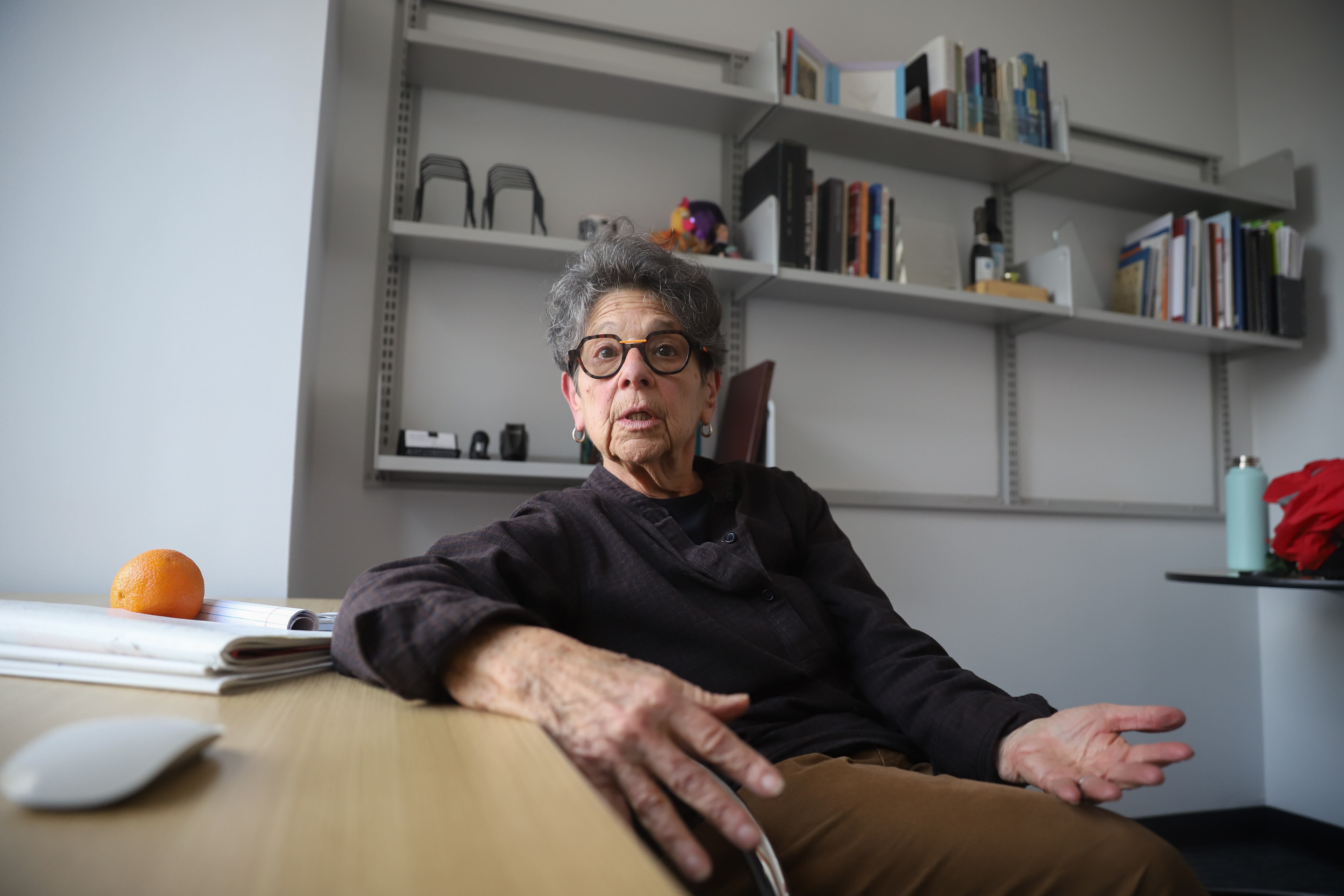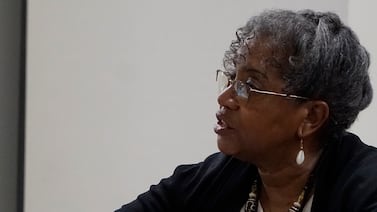Public health, explained: Sign up to receive Healthbeat’s free New York City newsletter here.
Ruth Finkelstein, a professor of public health at Hunter College and co-director of the New York Retirement and Disability Research Center, remembers in excruciating detail the moment she found out the Social Security Administration cancelled the funding it had promised.
It was 6:20 p.m. Feb. 20, and a mild snowstorm blew outside her window. Finkelstein didn’t receive a phone call or even an email. Instead, a small update appeared on the administrative system the center uses to manage grants.
“It said that the government was no longer interested in this work and that it was terminated effective today,” she recalled.
The New York branch was one of six national research centers comprising the terminated Retirement and Disability Research Consortium, which had existed in various forms for the past 25 years.
The consortium’s termination is one piece of the Trump administration’s larger assault on the Social Security Administration and other federal agencies, including major cuts to the U.S. Agency for International Development, the Department of Education, and the Department of Health and Human Services.
The agency launched the New York center just two years ago, awarding it $1.9 million in the first year of a four-year contract. A partnership between CUNY and The New School, the center’s research focused on the ways Social Security benefits could be more equitably applied across America’s socioeconomic spectrum.
It analyzed barriers to access, including discrimination encountered by older LGBTQ+ adults, language and cultural obstacles facing older Asian Americans, and the impacts of cash pay on retirement security, particularly among Latino workers.
For example, its review of literature on the intersection between aging, health, and climate change illuminated gaps and presented recommendations to fill them, such as emphasis on vulnerable populations and improved data collection techniques.
The New York center also focused on Social Security access for formerly incarcerated New Yorkers, like Coney Island resident Frankie DeChirico. While serving 35 years at Sullivan Correctional Facility, DeChirico sustained an injury that shattered his femur, prompting surgery to implant a rod running from hip to knee. Upon release from prison in 2023, the Social Security Administration approved DeChirico’s claim for Supplemental Security Income, which provides monthly payments to individuals with disabilities and older adults with limited resources.
But an eight-month initial payment delay and confusing reductions in his monthly checks have made it difficult to navigate life after release. “I just got a letter from them that they were going to withhold $96.70. They said they were overpaying or something – I don’t understand it,” DeChirico said. The reduction takes DeChirico’s monthly income from $644 down to $547. “I have to stretch it out the best I can,” he said.
The New York research center had also been pursuing a community-based research study into barriers encountered by formerly incarcerated New Yorkers in accessing disability benefits.
Almost 4 million New Yorkers collect Social Security benefits, and 571,000 rely on it for more than 90% of their income. “It’s paying for food, it’s paying for rent, for Medicare … and then any form of discretionary spending that you want to think about from toothpaste to visiting your grandkids,” Finkelstein said.
The announcement of the consortium’s termination came from the agency’s previous acting commissioner, Leland Dudek. “Terminating our RDRC cooperative agreements aligns with President [Donald] Trump’s priorities to end fraudulent and wasteful initiatives and contracts,” Dudek said in a press release. Dudek, who previously worked in a midlevel job in the anti-fraud office, was placed on administrative leave in February, accused of sharing sensitive information with the Department of Government Efficiency. He was reinstated and promoted days later.
Keeping with his previous role, Dudek prioritized “anti-fraud” efforts as acting commissioner. According to a report by Kathleen Romig, director of Social Security and Disability Policy at the Center on Budget and Policy Priorities, Dudek’s team scaled back phone services, forcing older adults who want to change their direct deposit information to either reckon with QR codes and confusing authentications, or venture to field offices.
The Social Security Administration could not be reached for comment for this article.
An analysis by the Center on Budget and Policy Priorities reports that 6 million seniors live over 45 miles away from their nearest Social Security office. If beneficiaries can get to the offices, they may encounter longer wait times due to dramatic staff reductions.
With reduced funding and changes in how claimants interact with the agency, vulnerable New Yorkers may miss out on essential benefits. “Without robust research,” Finkelstein said, “the Social Security system grows less and less functional for the people who rely on it.”
Richard Frank, director of the Center on Health Policy at the Brookings Institution, has two hypotheses about why the agency terminated the research consortium.
“Let’s start off by being generous,” he said, “and say the real thing is that they just don’t understand what research has to do with running a program,” and that the extent of it should be checking if someone who says they’re sick really is sick.
“The less generous way,” Frank said, “would be to say that basically these people distrust science and expertise, and therefore don’t believe that it’s going to get them answers that are in line with their view of the world.”
As Finkelstein considers the future of a Social Security Administration without a robust research program, she can’t help but get existential.
“No longer are we understanding how family caregiving works in families applying for disability benefits,” she said, expressing exasperation. “No longer are we understanding how late-arriving immigrants are managing their retirement.”
The list of vulnerable New Yorkers whose interactions with Social Security will no longer be monitored goes on and on, she said. “I’m not usually this overwrought, but I never imagined anything like this. I can’t imagine where it’s going.”
This story was produced in partnership with the Health & Science Reporting Program at the Craig Newmark Graduate School of Journalism at CUNY.







